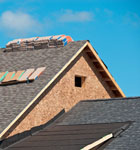At a Glance
Locations
New Orleans, Baton Rouge, and Lafayette, LA; Gulfport, MS
Founded
1946
Employees
100
Specialty
Soil mechanics
Water saturation, load-bearing strength, the likelihood of erosion—dirt might seem simple, but there’s actually a lot to consider in the geotechnical-engineering field of soil mechanics. Eustis Engineering Services, LLC, has been an expert in the science since the firm was founded by J. Bres Eustis in Vicksburg, Mississippi, in 1946, and the business has only expanded since—opening offices in other states and adding new capabilities. This has helped keep Eustis competitive wherever construction funding moves along the Misssippi River and the Gulf Coast, including post-Katrina New Orleans.
“We were founded on geotechnical engineering, which is a specialty of civil engineering and deals with soil mechanics and designs of shallow and deep foundations—all the things necessary for infrastructure,” says Jim Hance, PE, vice president of Eustis. The company has a diverse client base bridging the public and private sectors, and it involves itself with projects ranging from less than $10 million to greater than $1 billion. It has worked with developers, architects, civil engineering firms, multidiscipline engineering firms, structural engineers, and contractors, and it also has industrial clients in the petrochemical, oil, and gas industries.
Since 1985, the company has expanded to provide construction-phase services such as construction-materials testing (CMT) and engineering services during construction. Historically, this design work was fed by Eustis’s exploration services.
“We would go out and drill soil borings and perform laboratory testing on soil samples, then we would evaluate that data to provide our engineering recommendations,” Hance says. “That was our bread-and-butter work, and we have since launched into other services.” For example, Eustis now installs and monitors geotechnical instrumentation, which enables clients to use remote-sensing technology to evaluate the performance of their structures to see how subsurface soils are responding to heavy loads.
The biggest changes in Eustis’s evolution have occurred since Hurricane Katrina hit in 2005. Before then, the company was predominately one office, one laboratory, but water damage after the storm forced Hance and the rest of the team to relocate to Lafayette, Louisiana. Eustis has since maintained that office, moved back into its headquarters in Metairie (a New Orleans suburb), and branched out to Gulfport, Mississippi, and Baton Rouge, Louisiana.
Top 4 Products Eustis Engineering Uses
1. The CME 850X track rig is an important piece of equipment for geotechnical exploration.
2. The Direct Simple Shear Device, by GeoTAC, is a high-end laboratory tool for shear testing.
3. The CR 1000 Datalogger, by Campbell Scientific, Inc., enables Eustis to use remote-sensing technology for its geotechnical-instrumentation projects.
4. Vibrating Wire Piezometers, by Durham Geo Slope Indicator, are geotechnical instruments that can measure water pressure.
In addition to pushing the company to expand, Hurricane Katrina presented Eustis with new business opportunities. Since the unanticipated flooding of the city, the company has been involved in major projects connected to Greater New Orleans’s Hurricane and Storm Damage Risk Reduction System (HSDRRS), including concrete flood walls, earthen levees, gated structures that span across navigation channels, and a surge-barrier wall. “We’ve really done the full gamut of structures that [compose] the HSDRRS system,” Hance says. “We’ve provided field exploration with our soil borings and cone-penetrometer testing, we’ve used our laboratories to evaluate the engineering characteristics of the soils, and then we’ve performed geotechnical designs to develop the plans and specifications for building these structures. Some of our engineers also performed dynamic pile testing. Our CMT group was also kept busy doing vibration monitoring, logging the installation of pile foundations, and testing concrete.”
As if that weren’t enough, Eustis has done additional work on the project with the US Army Corps of Engineers, helping to review contractor submittals, to perform site visits to ensure plans and specifications are being followed, and, in some cases, to install and monitor instrumentation to evaluate the performance of the subsurface near where flood walls were or are to be constructed.
All of the hurricane protection projects are coming to a close this summer. “It’s been quite a ride, but it certainly has been rewarding to be involved as an engineer and a resident of New Orleans,” Hance says. And thanks to its ever-expanding engineering expertise, Eustis looks forward to its next major project, wherever and whatever that might be. ABQ


